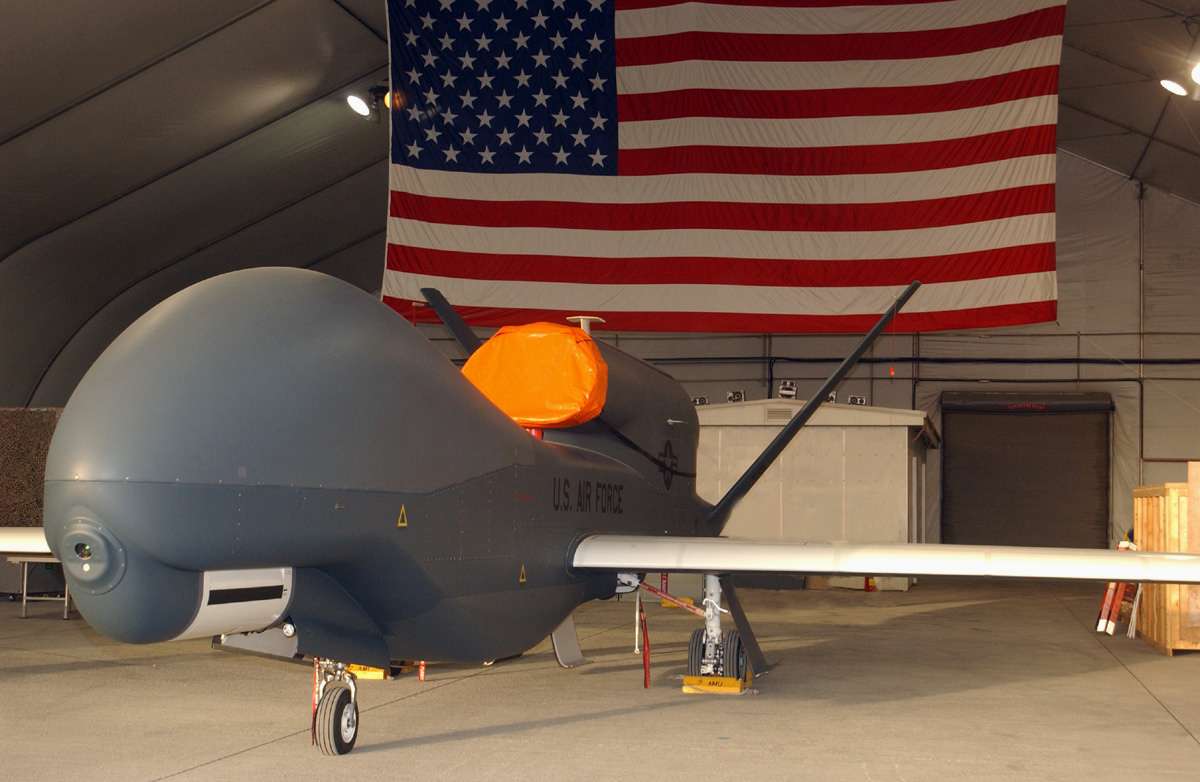 The Global Hawk, seen here, was one type of equipment found to have Chinese counterfeit parts in 2012. Credit Staff Sgt. Christopher Matthews.
The Global Hawk, seen here, was one type of equipment found to have Chinese counterfeit parts in 2012. Credit Staff Sgt. Christopher Matthews.
Despite Sanctions, U.S. Defense Still Sources from China
Yesterday, the Biden Administration placed sanctions on an additional twenty-eight international entities involved in the war in Ukraine. Nine of these, including China’s Asia Pacific Links Ltd., are accused of providing the Russian Special Technology Center with dual-use drone equipment used by the Kremlin’s Main Intelligence Directorate. Another six Chinese firms allegedly supplied drone parts to the Iran Aircraft Manufacturing Company, whose drones are also used by Russia in Ukraine. While the restrictions will undoubtedly affect Russian supply chains, they will impact the U.S. as well. Why? Chinese manufacturers remain deeply embedded within American military infrastructure.
Chinese equipment has permeated military supply chains for over a decade. In 2012, the Senate Armed Forces Committee found that counterfeit parts from China were being integrated into several critical systems. These included artificial intelligence capacities in the Air Force’s Global Hawk unmanned surveillance aircraft, the Navy’s Integrated Submarine Imaging System, and the Army’s Stryker Mobile Gun. With 1800 cases containing over one million counterfeit parts, the committee’s conclusion was that both national security and service members were being put at jeopardy.
Despite these findings, China continues to supply goods and services used by the United States for dual-use and defense purposes. From 2018 to 2022, there were 471 tier 1 Chinese suppliers of semiconductors and related devices to the US defense industry, more than any other country other than the US itself, and 299 suppliers in tier 2. Data analytics company Govini has identified a surplus of Chinese vendors and suppliers in twelve critical technology areas, including biotechnology, nuclear modernization, hypersonic, and space technologies that are vital to U.S. national security.
These partnerships pose a multitude of risks. Most obviously, sourcing defense-related items from adversarial countries makes supply chains vulnerable to trade controls. Over 700 Chinese companies are on the Sanctioned Entity List, which continues to expand as new vulnerabilities are identified. Secondly, spyware software and hardware have been discovered in Chinese-produced commercial and military equipment, such as naval ports, for years. Finally, the Chinese Communist Party has been honest about increasing requirements for private Chinese companies to hand over all data, and especially any foreign or sensitive data, at their own discretion. These actions jeopardize any U.S. intellectual property and military intelligence that crosses paths with Chinese producers or suppliers.
Sanctions, however, are insufficient to curb these risks on their own. While expanding sanctions makes it harder for firms and individuals to supply military equipment to Russia, it also prevents these actors from supporting the U.S. military, leaving gaps that are expensive to fill. Partners and allies often source equipment from China while working with the U.S. defense industry and NATO, and tracking downstream supply chains to identify sanctioned entities is challenging. Sanctions also threaten global trade routes already weakened by COVID-19. Supply chain issues hit the defense industry especially hard and have still not entirely recovered. With climate change making pandemics up to 38% more likely over the next decade, supply lines are increasingly tenuous.
These ramifications demonstrate the importance of having a reliable—and preferably domestic—source of military equipment and supplies. Though the US aims to onshore development of critical technologies through initiatives such as the National Strategy for Advanced Manufacturing, the Inflation Reduction Act, and the CHIPS and Science Act, bolstering this infrastructure takes time. While these programs come into effect, additional steps are needed as sanctions escalate to help ensure that critical items are sourced from allied states rather than potential adversaries. Two Defense Federal Acquisition Regulation Supplement (DFARS) clauses require companies to disclose any work on DOD contracts done in China, which is a step in the right direction. Strengthening such regulations to prevent contracts from being awarded when firms partner with China would make these clauses more effective. Reliance on China could also be minimized by increasing purchases from partners in Europe, Australia, or the Middle East. As the Biden administration levies sanctions, it should ensure sufficient purchasing power is given to the Department of Defense and other agencies to pursue newer and safer partnerships.
As sanctions within global military supply chains expand, disentangling Chinese-affiliated suppliers and vendors from U.S. national security infrastructure is a key priority. Though the tension between the U.S. and China could be aggravated by such action, this, along with other developing policy trends, can help make the situation more favorable to the U.S. While the problem cannot be solved overnight, the potential impact of China’s ongoing intrusion into global military supply chains must be mitigated with strategic spending and legislation to prevent future crises. If the Biden administration acts now, it can balance the risks of ongoing sanctions with the long-term benefits of bringing manufacturing back home.






